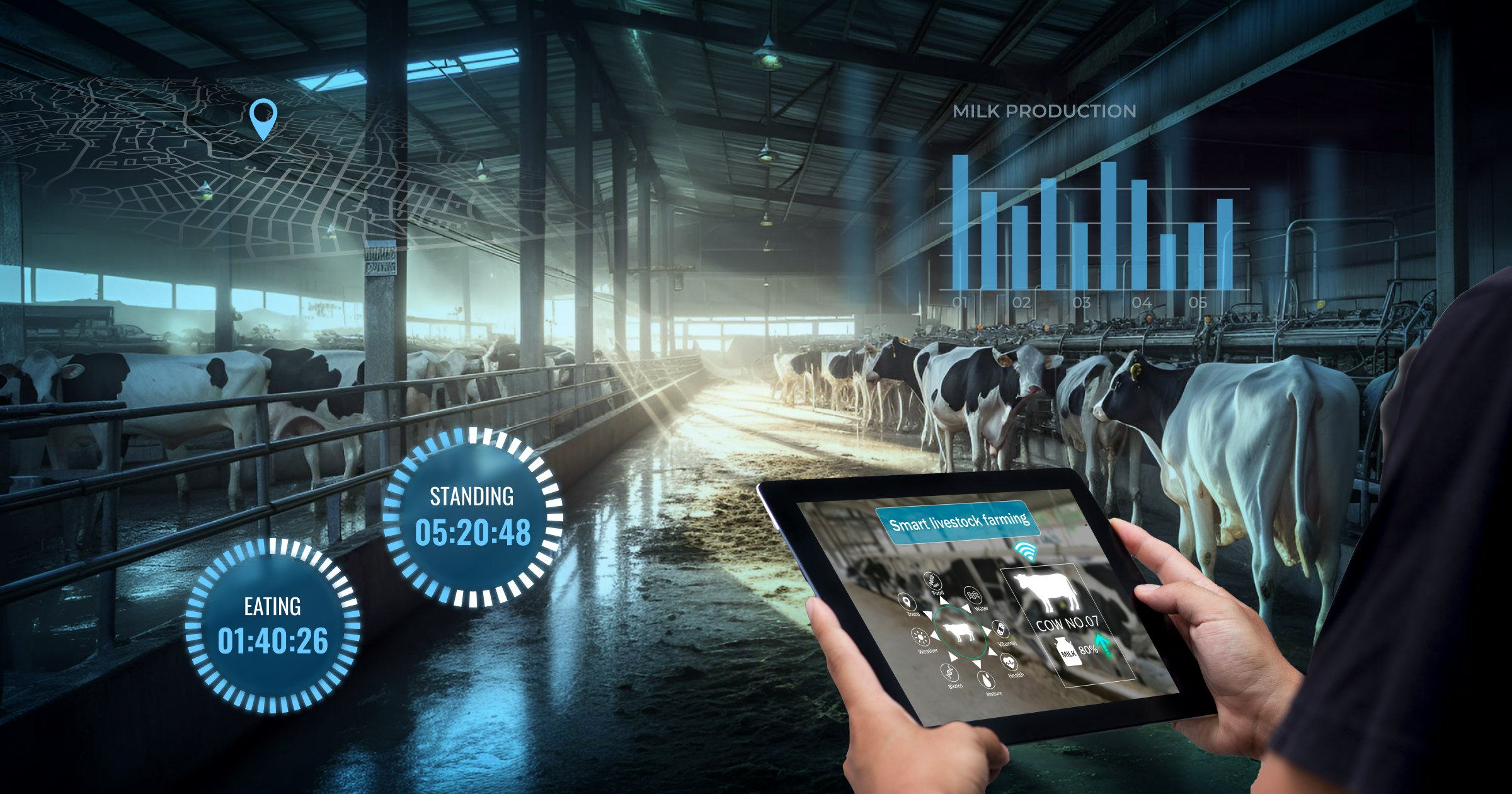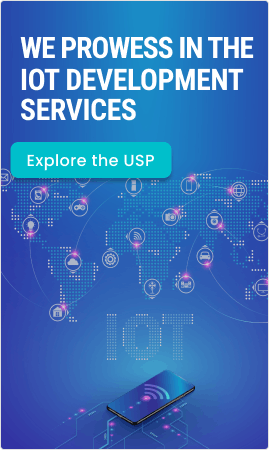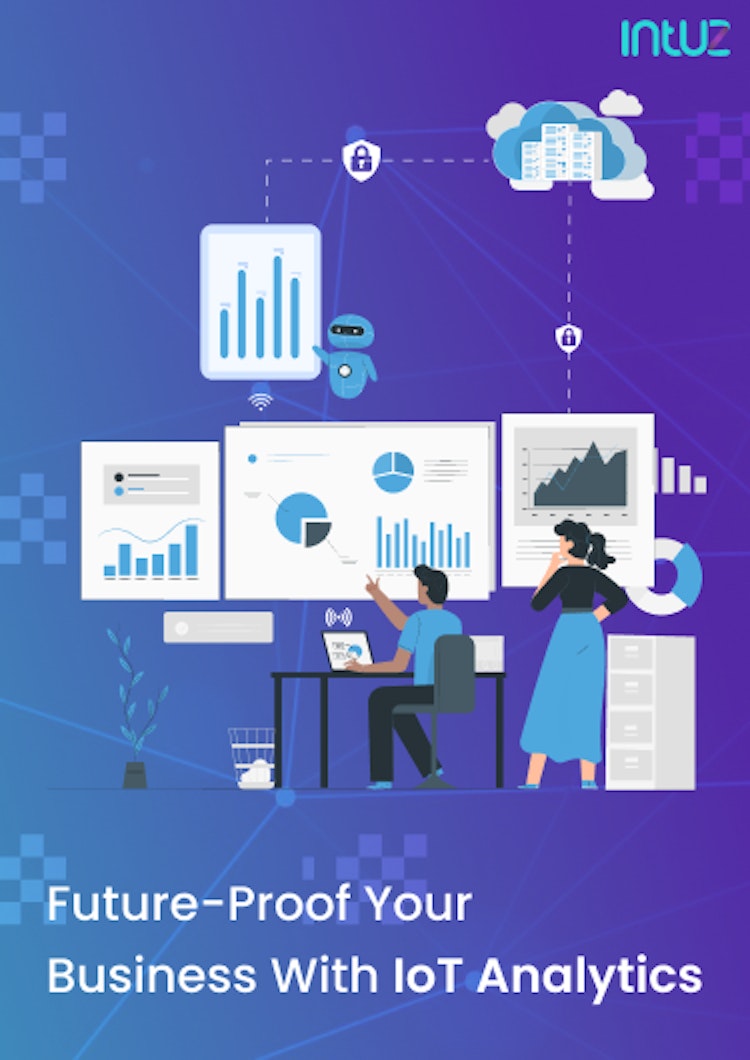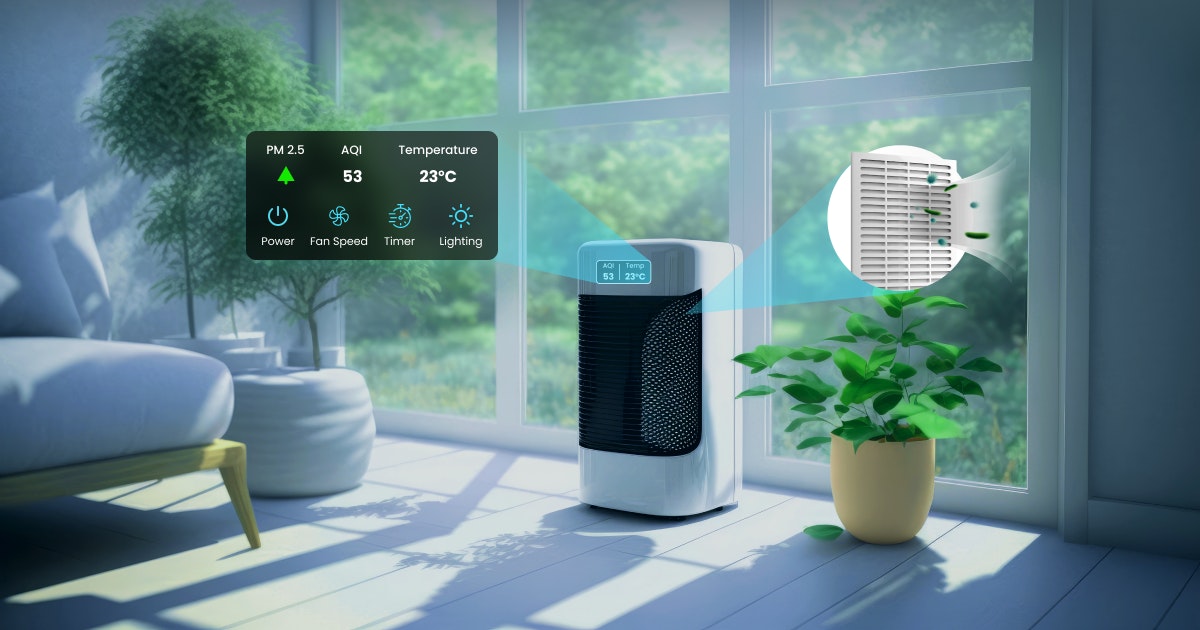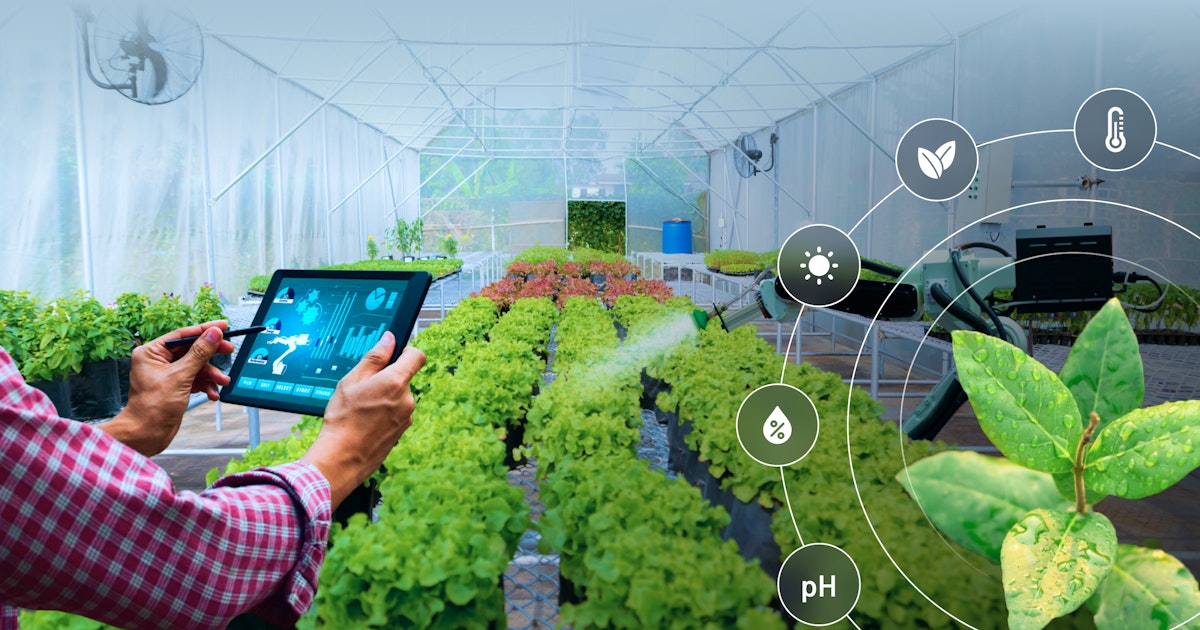Table of Content
The agricultural sector depends heavily on livestock management, and technological improvements have enabled creative solutions to improve this fundamental practice.
IoT-enabled livestock management manages and monitors livestock using IoT technology, enabling farmers to collect real-time data on their animals' health, environment, and behavior.
Harnessing the potential of AI, farmers can evaluate this data and make timely decisions that improve operational efficiency.
Sensors had a 51 percent market share in 2016 in the global livestock monitoring and management market's hardware and systems technology category.
Accepting AI & IoT-enabled livestock management creates new opportunities for technology-driven, sustainable farming methods in the contemporary agricultural landscape.
How AI & IoT-Enabled Livestock Management Works
IoT-enabled livestock management gathers, transmits, stores, analyzes, and interacts with livestock-related data using advanced technology, robust infrastructure, and sophisticated data processing methods.
In the projection period of 2022 to 2029, the Internet of Things (IoT) in the livestock management market is anticipated to experience market growth at a pace of 12.1%, reaching an estimated USD 11.18 billion by 2029.
Integrating AI into IoT can empower your existing processes and systems by offering advanced capabilities for accurate data analysis, actionable insights, and effective decision-making. Farmers can use advanced AI algorithms to ensure animal welfare and better productivity.
The technology analyzes data, identifies patterns, and anticipates animal health issues. Let’s talk about the numbers to understand the essence of AI in the livestock market. It’s expected to reach USD 2,997.9 million by 2033.
The entire cycle of livestock management utilizing AIoT technology is broken down as follows:
The Underlying Infrastructure and Technology
AI and IoT-enabled livestock management incorporate multiple parts and technologies to build a connected ecosystem. These elements consist of:
Sensors
Sensors are essential for gathering up-to-date information on cattle health. These sensors are affixed to animals or positioned in key locations inside their habitats. Once the IoT sensors collect the data, AI comes into the picture.
AI's intuitive algorithm processes the collected data and analyzes it to detect issues in animal health before they become severe. It helps you take preventive actions to improve animal wellness.
Devices
Data communication between the sensors, the central system, and the external user interfaces is facilitated by devices like gateways, control panels, and actuators. These gadgets serve as middlemen, gathering sensor data and sending it to the main system.
These devices become more powerful when they adopt AI capabilities. The technology performs real-time data analysis to enable you with benefits like
- Improving feed schedules
- Better control through automation
- Adjusting changing to environmental conditions
- Effective resource utilization
Connectivity
For seamless data transmission in AI and IoT-enabled livestock management, robust and dependable connectivity is crucial. Wireless technologies like Wi-Fi, Bluetooth, or Low-Power Wide-Area Networks (LPWAN) are frequently utilized to enable smooth data transfer between sensors, devices, and the central system.
AI integration into IoT strengthens connectivity and ensures seamless data transmission. It provides you with effective data processing and communication that help you improve network usage and reduce latency.
Data Analysis and Insights
You can process and analyze the collected data using AI to get actionable insights and recommendations. By recognizing the patterns in animal behavior, the technology helps you forecast disease outbreaks and improve resource management. AI analytics transforms your raw data into meaningful information that enables you to make the right decision at the right time.
Automation
After the completion of data analysis, AI solutions automate the various interventions. For example, if the IoT-enabled sensor detects the increasing temperature in an animal’s body, it indicates the illness.
AI recognizes this sign and sends an alert to the fret automatically. Moreover, it also suggests preventive actions. You can also use AI to control and adjust watering and feeding systems. Eventually, AI integration helps you enhance the condition of livestock.
Data Collection and Transmission Process
Sensor data gathering
Sensors gather information about livestock and their surroundings. While a sensor attached to an animal can detect the animal's body temperature, a sensor placed in the environment can record the temperature, humidity, and air quality of the livestock's living space.
Advanced IoT sensors and AI analytics are capable of real-time health monitoring of the animals. You can leverage early diagnosis and take preventive actions for cure. You can improve farm management efficiency, sustainability, and productivity by providing the right treatment on time.
Communication between Sensors and Devices
The network's devices receive the data the sensors have gathered and communicated. This exchange of information can take place wirelessly or over wired connections, depending on the particular implementation.
The data gathered via IoT devices are processed using AI. It helps the farmers gain invaluable insights into animal nutrition, weight, health, and reproduction management. This help you with smart livestock management.
Device-to-Central System Communication
Data is forwarded to the central system or cloud-based platform after it has reached the devices (device-to-central system communication). This communication can happen immediately or through repeated data synchronization.
You can simplify animal reproduction management, nutrition, and health using AI. By integrating AI, you can ensure animals live a healthy life in a happy environment that eventually increases operational efficiency.
Data Storage and Analysis
Data Collection, Storage, and Analysis The central system collects the data and saves it in databases or cloud storage. To evaluate the data, glean insightful conclusions, and spot trends or abnormalities, sophisticated analytics tools, and algorithms are used.
The animal's health, behavior, and environmental circumstances can all be learned from this examination. You can store the collected data in a cloud-based platform or database. You can leverage the capabilities of AI for such platforms to analyze the data accurately and make well-informed decisions.
By leveraging the power of AIoT, livestock monitoring becomes more efficient, data-driven, and proactive, improving animal welfare, increasing productivity, and promoting sustainable farming practices.
Upgrade to IoT-Powered Livestock Monitoring Today!
Let's Get StartedKey Features of AI and IoT-Enabled Livestock Management
The monitoring, tracking, and care of animals by farmers will be revolutionized by AIoT-enabled livestock management's vast range of essential characteristics. The essential traits consist of the following:
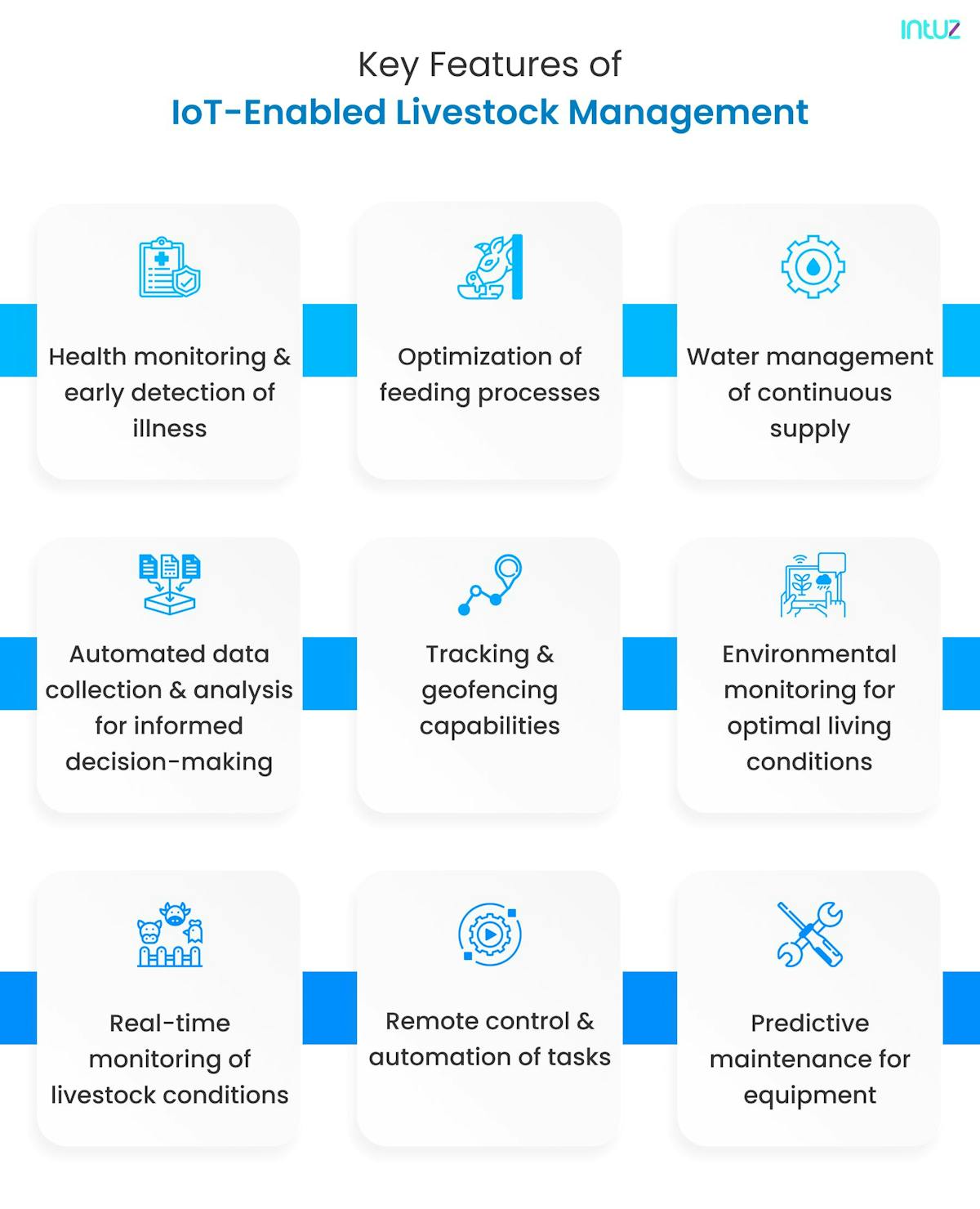
Features of IoT-Enabled Livestock Management
1. Real-time monitoring of livestock conditions
Essential elements, including temperature, humidity, and other environmental conditions, are continuously monitored by IoT-enabled systems. Farmers can quickly react to aberrant conditions since they have access to real-time data on the health of their cattle.
IoT systems can control temperature and humidity levels in livestock settings by combining sensors and actuators. Based on monitoring, the IoT systems collect the data. AI analyzes data to anticipate issues with animal health. This helps you to respond quickly to any abnormal condition of the animals.
2. Environmental monitoring for optimal living conditions
IoT technologies allow for thorough environmental monitoring in areas with animals. Establishing the best and most pleasant animal housing conditions includes air quality monitoring, ventilation management, climate adjustments, and lighting optimization.
AI analyses the data on housing conditions and automatically adjusts settings to maintain the best possible condition for the animals.
3. Tracking and geofencing capabilities
The Internet of Things (IoT), which offers location tracking and virtual boundaries, facilitates livestock tracking. Farmers can do this to keep an eye on the movement of their livestock, stop theft, and get notifications if it wanders outside of set borders.
By detecting movement patterns and geofence breaches of animals, AI sends alerts automatically so that you can take necessary actions to prevent theft and misplaced livestock.
4. Health monitoring and early detection of illnesses
The continuous monitoring of cattle vital signs, including heart rate and respiration, is made possible by IoT-enabled equipment. Farmers can spot early indications of sickness or suffering by evaluating this data, allowing for prompt intervention and treatment.
As we already discussed earlier, AI helps you detect illness and distress in animals in advance to improve the overall health management of livestock.
5. Optimization of feeding processes
Through automated feeding systems, IoT systems optimize feeding procedures. These devices distribute accurate feed quantities, cutting down on wastage and guaranteeing that each animal gets the right amount of nourishment.
Additionally, this capability makes it possible to optimize feed for better animal health and productivity. AI processes the data collected during the monitoring and finds the optimal feeding pattern. These insights help you boost product quality and improve productivity at a lower cost.
6. Water management for continuous supply
IoT systems monitor the water levels in tanks or troughs used for cattle. Automated refilling techniques guarantee a steady water flow, reducing dehydration and ensuring that animals always have access to this vital resource.
While IoT ensures the water level is maintained, AI helps you anticipate water consumption and automate the water tank refill process. Thus, you can never run out of water stock.
7. Automated data collection and analysis for informed decision-making
Livestock management that is IoT-enabled automates the gathering and archiving of data from multiple sensors. Advanced analytics tools are then used to examine this data, giving farmers important information they can use to make well-informed decisions about things like optimizing breeding programs or changing farming practices.
8. Remote control and automation of tasks
IoT technology makes remote access and management of environmental elements in livestock regions possible. Farmers can improve operational effectiveness and animal welfare by remotely adjusting settings for lighting, ventilation, and other aspects.
In addition, automating gate operations can reduce human work and improve farm management. Integration of AI into IoT improves animal welfare along with operational efficiency. Based on real-time data analysis, AI automates adjustments of ventilation, lighting, and other elements to ensure the comfort of the animals.
9. Predictive maintenance for equipment
IoT systems keep track of the performance and usage trends of the equipment used in managing cattle. Farmers can schedule preventive maintenance by examining this data to preserve their equipment's longevity and best performance, saving downtime and expenses.
Utilizing the analytical capabilities of AI, you can anticipate equipment failure. This helps you schedule preventive maintenance so that the operations run seamlessly with reduced downtime. It also extends the life of equipment and reduces the cost of frequent purchase of equipment.
By integrating AI with IoT technologies, livestock management becomes more precise, proactive, and efficient, enhancing animal welfare, productivity, and sustainability.
The Role Of IoT In Enhancing Asset Management
Learn MoreUse Cases and Applications of IoT-based Livestock Management
Numerous advantages come with the adoption of IoT-based livestock management, and it also gives farmers access to a wide range of use cases and applications. The following are some important IoT-based livestock management use cases and applications:
1. Livestock tracking and management in large-scale farms
Large-scale farms may track and monitor their animals in real time using IoT-enabled technologies. Farmers can easily detect and track individual animals using GPS or RFID technology, ensuring their protection.
2. Precision farming for individual animal care
IoT technology provides precision farming methods catering to certain animals' needs. Animal tracking information, activity levels, feeding patterns, and vital indicators are gathered through sensors and wearable technology.
3. Monitoring and managing grazing animals
IoT technology can monitor grazing livestock like sheep and cattle to ensure their safety and prevent escape attempts. Geo-fencing and GPS-enabled tracking systems warn farmers if animals leave authorized grazing zones.
4. Disease detection and prevention
Early illness identification and prevention are made easier with IoT-based livestock management. Advanced analytics and continuous vital sign monitoring can identify minor changes in an animal's health. Alerts for possible illness or discomfort are sent to farmers, enabling quick action, stopping the spread of infections, and limiting financial losses.
5. Improved breeding and reproductive management
IoT technology provides useful insights into the processes of animal reproduction and breeding. Farmers can enhance breeding plans, precisely time insemination, and increase breeding success rates by monitoring heat detection, fertility indicators, and reproductive behavior.
6. Enhanced farm productivity and profitability
The management of cattle with IoT helps to maximize farm profitability and productivity. Farmers may provide their animals with the best living surroundings possible to encourage development, production, and general health by regularly monitoring environmental factors like temperature, humidity, and air quality.
7. Feeding management
You can create personalized feeding plans as AI helps you assess the data of individual animals. The technology examines the weight, height, milk production capacity, and health status of each animal. Customized feeding plans improve feed efficiency and minimize waste. Eventually, you can leverage reduced operational costs.
8. Estrus detection and breeding optimization
To forecast the animal’s fertility cycle accurately, AI analyzes varied data such as milk composition and body temperature of the livestock. Detailed analyses help you set breeding goals, recommend optimal breeding times, and suggest genetic matches. By providing the right fertility detection and breeding suggestions, AI improves breeding practices and supports herd improvements.
Challenges and Considerations Adopting Livestock Management
Although IoT-enabled livestock management has several advantages, farmers must consider several obstacles and concerns before implementing this technology. These difficulties include:
1. Data security and privacy concerns
AIoT systems gather, analyze, and communicate private information on farm operations, livestock, and even farmers. It is essential to safeguard this data against theft, unauthorized access, and online threats.
2. Integration with existing farm management systems
Numerous farms already have well-established management structures and procedures. Compatibility concerns, data integration, and seamless connectivity between various technologies and platforms must be addressed for a seamless transition and efficient use of AI & IoT capabilities.
3. Cost Considerations and Return on Investment
Installing sensors, IoT devices, AI, and communication infrastructure can be expensive initially when implementing IoT solutions. Farmers must carefully consider the financial ramifications and estimate the possible ROI. Considering elements like enhanced animal health, decreased labor, increased efficiency, and potential cost savings in areas like feed and energy use is crucial.
4. Training and adoption by farmers
Farmers and their staff must receive training on how to use and understand the data produced by the IoT systems for IoT-enabled livestock management to be successfully implemented. Adopting and incorporating new technology into routine farm operations could involve a learning curve. Farmers must fund training programs and offer continuing assistance to enable the proper adoption and application of IoT technologies.
Next-Generation IoT Enabled Air Purifier: Smart Technology for Cleaner, Fresher Air
Learn MoreThe Relationship Between AI & IoT-Enabled Livestock Management and Animal Health
AIoT-enabled livestock management is essential for improving animal welfare and providing health outcomes. Farmers may monitor and manage their livestock more effectively and proactively by utilizing AIoT technologies, resulting in better animal health results. The following are the main ways that AIoT technology improves animal welfare:
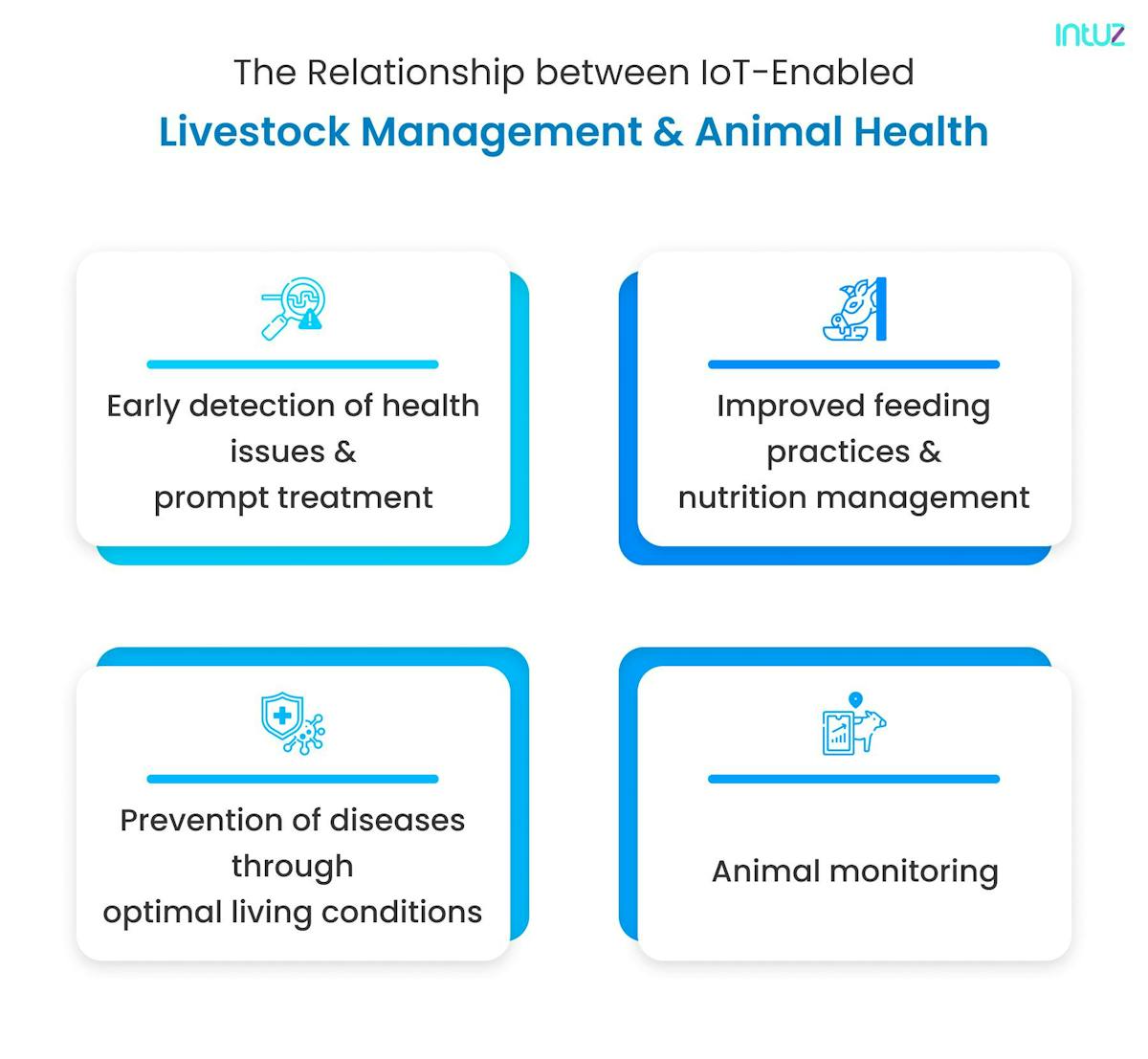
1. Animal monitoring
Internet of Things solutions allow continuous livestock monitoring through IoT sensors and wearable technology. These gadgets track vital indicators, behavioral patterns, eating patterns, and activity levels. Animal monitoring makes early detection of health problems or abnormalities possible, allowing for quick intervention and treatment.
2. Early detection of health issues and prompt treatment
AIoT technologies help with the early detection of cattle health issues through real-time animal monitoring. Alerts can be set off by any out-of-the-ordinary behavior or vital indicators, urging farmers to investigate it further and take appropriate action.
3. Prevention of diseases through optimal living conditions
Farmers may establish and maintain ideal living conditions for their animals with the help of AI & IoT-enabled livestock management. As stress levels are lowered, and animals are less vulnerable to infections and other health problems, ideal living circumstances help avoid sickness.
4. Improved feeding practices and nutrition management
AIoT technologies help manage animal nutrition and enhance feeding procedures. Automated feeding systems may deliver accurate feed quantities based on the requirements of each animal, ensuring optimum nutrition and reducing waste. AIoT systems can also track feed consumption and feeding habits, giving information on the dietary needs of each animal.
Optimize Your Livestock Tracking: Partner with Us for IoT Solutions!
Explore ServicesConclusion
Integration of AI in IoT works as icing on the cake. Modern technology analyzes the data collated by the IoT sensors and provides actionable insights and personalized recommendations. It helps improve farm operations, enhance animal welfare, and boost productivity.
AIoT-enabled livestock management offers a range of benefits and features that revolutionize how farmers manage their livestock.
Real-time monitoring of livestock conditions, tracking capabilities, health monitoring, and automated data collection & analysis enable proactive interventions, disease prevention, and improved feeding practices.
This technology enhances animal welfare, increases productivity, and improves farm outcomes.
Are you a livestock farmer/manager looking to leverage the power of AI - IoT technology for livestock management?
Book a Free 45-minute Consultation with Our AIoT Experts
In this personalized consultation, our experts will provide:
Comprehensive requirement analysis to define areas where AI and IoT can be implemented
Tailored solutions that ensure improved performance through optimal integration
In-depth guidance on integrating AI & IoT technologies into your ongoing business operations
Strategies to enhance monitoring capabilities and proactive management
Expert advice that helps you improve efficiency and financial outcomes.
